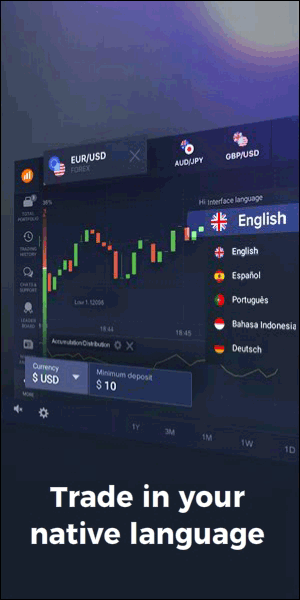Stochastic Indicator Strategy for Daytrading Forex & Stocks (Easy Pullback Strategy)
Dive into the world of stochastic indicators and discover a robust daytrading strategy tailored for Forex and stocks. Enhance your trades with our easy-to-follow pullback approach, combining powerful tools like EMAs, MACD, and trend lines. Whether you’re a novice or a seasoned trader, our insights will empower you to navigate the markets with confidence and precision.
In the complex world of trading, the stochastic indicator stands out as a popular tool among traders, thanks to its versatility and efficacy in different market conditions. In this article, we delve deep into how you can leverage this indicator to enhance your daytrading strategy, especially when trading Forex and stocks.
Stochastics vs. RSI: A Clear Winner
The stochastic indicator and the Relative Strength Index (RSI) are often pitted against each other, as they both aim to pinpoint overbought and oversold market conditions. However, a close comparison reveals that stochastics tend to outperform the RSI, providing cleaner and smoother signals. The presence of two lines, the %K and %D, offers additional layers of information, allowing traders to anticipate the direction of the market more accurately.
Mastering the Stochastic Indicator

One of the most prevalent mistakes made by novice traders is to take a position as soon as the stochastic indicator hits the overbought or oversold regions. This can lead to significant losses, especially in strongly trending markets where the indicator can linger in these extreme areas for extended periods. To mitigate this risk and enhance the accuracy of your trades, integrating the 200 Exponential Moving Average (EMA) is essential.
The strategy is straightforward: if the price is above the 200 EMA and the stochastic is oversold, consider a buying opportunity. Conversely, if the price is below the 200 EMA and the stochastic is overbought, a selling opportunity may be on the horizon. Remember, patience is key! Wait for the stochastic to retreat from the extreme regions before taking a position.
When it comes to exiting your trades, place your stop loss near the nearest swing low for buy positions and the nearest swing high for sell positions. Aim for a profit target that is twice the size of your stop loss to maintain a healthy risk-reward ratio.
Stochastic Indicator in Action: A Real-world Example
The strategy’s effectiveness is best illustrated through examples. Imagine a scenario where the price is trending above the 200 EMA, and the stochastic indicator plunges into the oversold territory. Instead of hastily entering a trade, wait patiently for the indicator to climb back above the oversold line, confirming a potential upward price reversal. Upon confirmation, take a long position, set your stop loss, and target a profit at twice the distance of your stop loss.
Enhancing the Strategy: Combining Stochastics with Support, Resistance, and Trend Lines
To further enhance the stochastic indicator strategy, integrating support, resistance, and trend lines can be invaluable. Identify potential buy signals when the price approaches a trend line while the stochastic is oversold. Similarly, sell signals can be spotted when the price approaches a resistance line while the stochastic is overbought. As always, wait for confirmation from the stochastic before taking a position.
Synergizing with MACD and 200 EMA
Another potent combination involves integrating the Moving Average Convergence Divergence (MACD) with the stochastic indicator and 200 EMA. This trifecta can provide robust signals, ensuring you’re trading in line with the prevailing trend while also benefiting from the stochastic’s sensitivity to market movements. The entry and exit strategies remain consistent, emphasizing the importance of confirmation and risk management.
Conclusion
The stochastic indicator, when used judiciously, can be a game-changer for day traders, providing timely and accurate signals for both Forex and stock markets. By combining it with additional tools like the 200 EMA, support and resistance lines, trend lines, and MACD, you equip yourself with a comprehensive strategy aimed at capitalizing on market pullbacks while adhering to the overarching trend. Remember, the key to successful trading lies in patience, discipline, and a well-structured strategy, all of which are encapsulated in this easy pullback strategy. Happy trading!
FAQ: Stochastic Indicator Strategy for Daytrading
Q1: What is the stochastic indicator used for in trading?
A1: The stochastic indicator is used as a momentum tool in trading to identify overbought and oversold market conditions, helping traders to predict potential price reversals.
Q2: How does the stochastic indicator differ from the RSI?
A2: While both indicators identify overbought and oversold conditions, the stochastic tends to provide cleaner and smoother signals compared to the often erratic RSI. Additionally, the stochastic has two lines (%K and %D) that offer additional signals and prediction capabilities.
Q3: What is a common mistake traders make when using the stochastic indicator?
A3: A common mistake is taking immediate buy or sell positions when the stochastic hits oversold or overbought levels, respectively. This can be risky, especially in strong trends where the indicator may remain in these extreme regions for extended periods.
Q4: How can the stochastic strategy be enhanced for better results?
A4: To enhance the stochastic strategy, integrate the 200 EMA to identify the medium-term trend, ensuring trades are made in the direction of the trend. Additionally, combining support and resistance lines, trend lines, and the MACD indicator can provide more robust signals.
Q5: What should I look for before taking a position with the stochastic indicator?
A5: Before taking a position, wait for the stochastic to move back from the overbought or oversold region, confirming a potential reversal. This ensures you are not prematurely entering a trade.
Q6: How should I set my stop loss and profit target in this strategy?
A6: Place your stop loss near the nearest swing low for buy positions and the nearest swing high for sell positions. Aim for a profit target that is twice the size of your stop loss to maintain a healthy risk-reward ratio.
Q7: Can the stochastic indicator strategy be used for both Forex and stocks?
A7: Yes, the stochastic indicator strategy outlined in the article can be effectively used for daytrading both Forex and stocks.
Q8: What additional indicators are recommended to use with the stochastic indicator?
A8: The 200 EMA, support and resistance lines, trend lines, and the MACD indicator are recommended for use in conjunction with the stochastic indicator to provide more accurate and reliable trading signals.
Q9: Is it necessary to use additional indicators with the stochastic indicator?
A9: While not strictly necessary, using additional indicators such as the 200 EMA and MACD can provide more context, help confirm signals, and improve the overall effectiveness of the stochastic indicator strategy.
Q10: What is the key to success when using the stochastic indicator strategy?
A10: The key to success lies in patience, discipline, and a well-structured strategy, ensuring you wait for confirmation from the stochastic and other indicators before entering trades and adhering to sound risk management practices.
Reference links from reputable sources can lend credibility to the content and provide readers with additional resources to deepen their understanding. Below are some suggested reference links related to stochastic indicators and trading strategies:
Investopedia – Stochastic Oscillator – A comprehensive guide on what stochastic oscillators are, how they are calculated, and how they can be used in trading.
DailyFX – Stochastic Indicator Trading Strategy Guide – This guide provides a detailed explanation of how to use the stochastic indicator in trading, including various strategies and examples.
BabyPips – How to Use Stochastic Indicator for Forex Trading – A beginner-friendly article that explains the basics of the stochastic indicator and how it can be applied in Forex trading.
TradingView – Stochastic Oscillator – TradingView offers a helpful overview of the stochastic oscillator, including its formula, interpretation, and trading signals.
Including references like these in your article or content can provide your readers with additional trusted sources to explore, ensuring they have access to accurate and comprehensive information.







